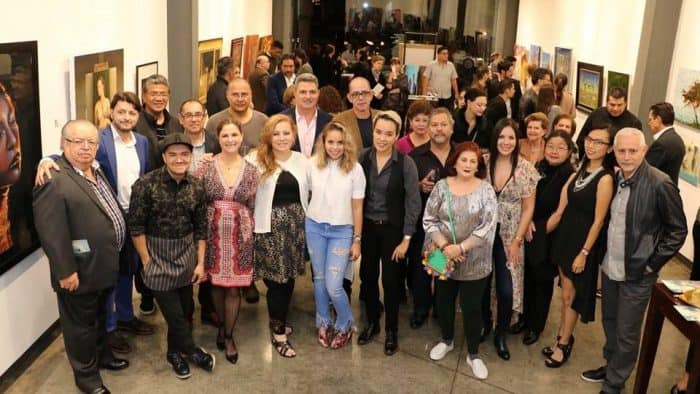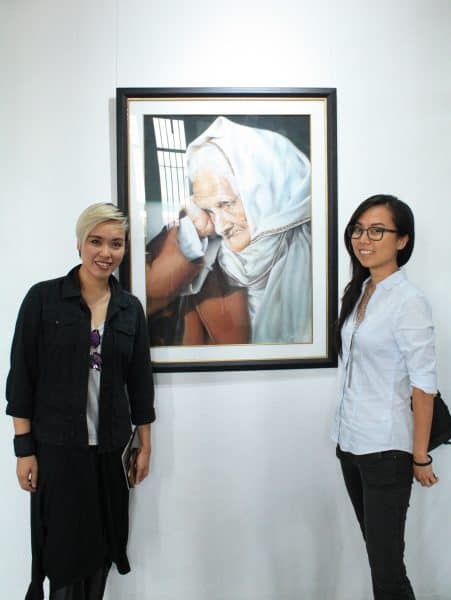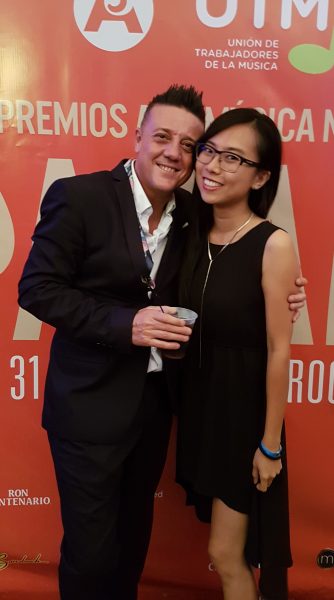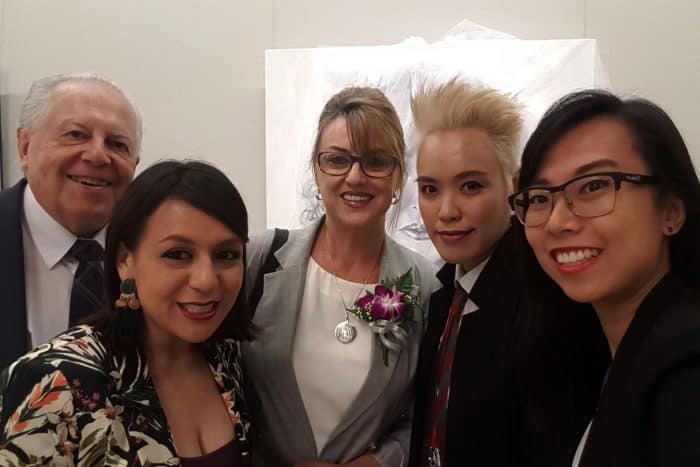When the Costa Rican cultural manager Iris Lam was a child living in the province of Puntarenas, she was constantly surrounded by art and culture. Whether it was going to the theater, reading at the library, visiting the Casa de la Cultura (House of Culture), or attending art exhibitions, culture was always in Lam’s life.
When the time came for Lam to decide on what she wanted to study, she had a very clear idea. She wanted to study where her mother worked, at the University of Costa Rica (UCR). Lam chose graphic design as her first career option, followed by nutrition.
Nutrition ended up being the field of study she pursued because of the variety of subjects that it offered rather than the career itself. Nutrition taught her about economics, statistics, calculus, biology, education, anatomy, and more. Lam then got a job at a Denny’s franchise working in management.
While working there, she got the desire to decorate her home with art. It was a stepping stone for her career as an arts and culture manager. When she researched the Costa Rican art scene, she found herself surprised that it was barely managed. That motivated her while she was getting her master’s degree in strategic management at the State University at a Distance (UNED).
This gave Lam the idea of focusing her thesis on the design of a commercial strategy for emerging painters in Costa Rica. She met various collectors, curators, gallery owners, and painters and was appointed as a tutor for Daniel Soto, who is currently the curator at the Contemporary Museum of Art and Design (MADC).
For her thesis, she published a book named ¿Cómo está el arroz y cómo cocinar en el mercado costarricense de arte pictórico? (How’s the Rice and How to Cook in the Costa Rican Pictorial Art Market?). That motivated her to keep working on providing help and solutions to strengthen a weakened art market.
Lam then got immersed in both the public and private cultural sectors. She became an arts and culture manager at the Spanish Cultural Center (CCE), a professor of cultural management at the UCR in Puntarenas, and private manager of Costa Rican artist Man Yu.
Lam told The Tico Times her main purpose was “to leave a footprint behind, being able to do something for the scene from the public and private sectors, from the state, the academic part and the independent part. I want to promote a better scene for all and for the state to one day say: here’s the budget for the arts. We won’t cut it because it’s necessary.”
On a rainy afternoon at the UCR’s Rodrigo Facio Campus in San Pedro, east of San José, The Tico Times sat down and spoke with Lam, 28, about her life and work. Excerpts follow.
What do you enjoy the most about culture?
The diversity. Because through culture, even if you can find certain generalized things, it really says a lot about the people: the art that an artist does, the art that a person buys. The art that’s more consolidated in the scene tells a lot about what’s happening and it’s part of the immediate context. I like not only being the spectator of that but also having an active position in what’s happening.
What I like the most about culture is that everyone is immersed in it. There’s no culture if there are no people. Besides that, it allows you to do something. I mean, as culture is formed by people, you are an active entity that can transform culture. Culture transforms you, but you can transform culture. I really like that: that you can do things that really leave a footprint behind.

Given the studies and research that you have carried out, what have you found out about the arts scene?
That people, including the consumers, don’t always value the pieces and their cost. Well, not always. There are people who value it, but many are not conscious of the cost of making an art piece and the added value that the artist places by signing it, what it means and its uniqueness.
Also, [sometimes] the artist does not know the value of the intermediation work and that’s a lot of the obstacles that exist in the general scene because the consumers don’t really value what the artist does and often want it for free, then artists don’t value what the intermediaries, promoters, dealers and gallery owners do.

Could you tell me how cultural education is managed in the public and private sectors?
The cultural incentives, always, since the history of the Costa Rica art market, the private sector has been the one that has come to solve gaps that the state has had. This comes from the biennials organized by Lachner y Sáenz in the eighties.
The people that know the value of art and that promoted art from their pockets; they have always ended up filling the gaps that the state has left behind. I don’t believe that people must wait for the state to do everything and that’s a flaw we have in Costa Rica on a general level, not only in art. We’re always waiting for the government to take care of everything and that’s an error that happens in all sectors.

Could you explain on a historical level how the private sector has solved these gaps on a cultural level?
For example, one of the strongest things were the Lachner y Sáenz biennials. They were one of the strongest collectors in the eighties. They began organizing the biennials, which had exhibitions of their new acquisitions.
They bought art, not because the law obliged them or because of cultural policies, but because they knew the value of it. They made these exhibitions to show what they bought, as well as consolidating a space for artists where [their art was] placed with prices and could be bought.
Afterwards, there was Jacobo Carpio and around that time there was Virginia Pérez Ratton, who was the director of the MADC. When she finished her management position there, she continued promoting art from her private activity, which was Teorética.
She was a wealthy woman. I did not know her, but the investigation says that she was wealthy and people with wealth travel more, meet more people, have more contacts outside [of the country], and have more possibilities of exporting.
She created Teorética with the purpose of continuing to support the Costa Rican art scene and I don’t know if it was thought of or not, we will never know, but she became a Central American referent.

Lastly, where do you think Costa Rica is going regarding culture?
That’s a difficult question. Since the new government is just starting, it can look like one thing and end up in as another. I think it all depends on how much the government encourages private investment. If the government continues discouraging and putting more taxes and obstacles for private investment, which is the one that has always been pushing art in the gaps the state has left, then the [private sector] will have to worry for its business and won’t be able to invest in art, collectors, managers and all of that.
There won’t be the economical facility to keep working in an area that’s economically unstable. The normal thing is that the cultural policies have never existed, and if the government places obstacles, then its course can be quite negative.
It all depends a lot on what will happen with the private sector because, who are the ones who sell the art? It’s the gallery owners that are supporting the art exportation. They’re the ones who move the artist. State collecting does not exist and even if the state has cultural policies, the focus is on rights, that art is a right, but where are the rights for artists to eat?






